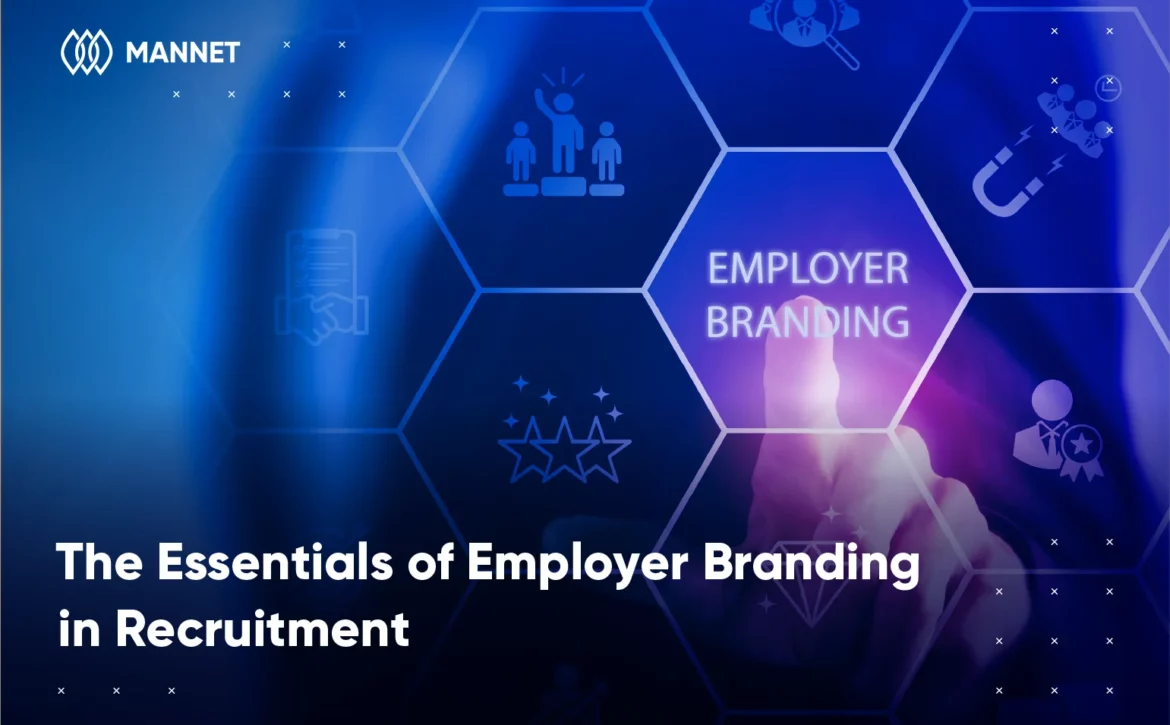When it comes to building a strong HR foundation, one of the most important tools any organization can have is an employee handbook. But what is employee handbook, exactly? With a well-crafted handbook in place, employees have a clear reference point when they have questions or concerns, and HR teams benefit from a more efficient, consistent process.
If businesses are ready to take HR operations to the next level, let’s dive into what an employee handbook is, why it’s essential, and what it should include – all within this comprehensive blog post.
What is Employee Handbook?
According to Indeed, “an employee handbook is a document that outlines the core values of a company and its policies and guidelines.” It serves as a central resource, providing information on topics such as company culture, code of conduct, benefits, workplace rules, and procedures.
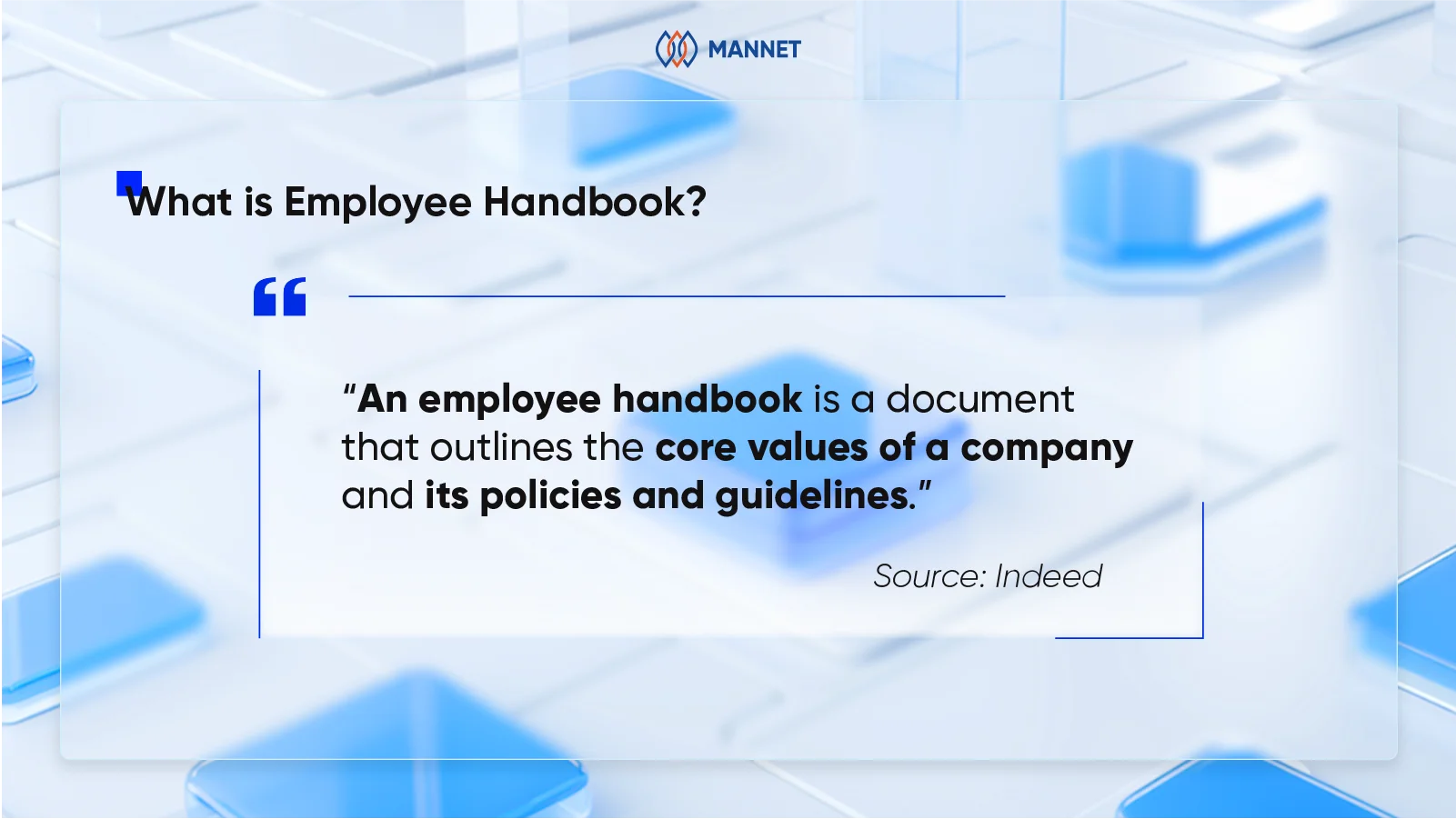
What is employee handbook?
Typically provided during the onboarding process, the handbook helps new hires understand the organization’s values and operational guidelines, ensuring a smooth integration into the company.
Why Every Business Needs an Employee Handbook
Beyond mere practical details, a well-crafted employee handbook provides crucial context, enabling employees to understand their role within the company culture. This essential manual significantly contributes to:
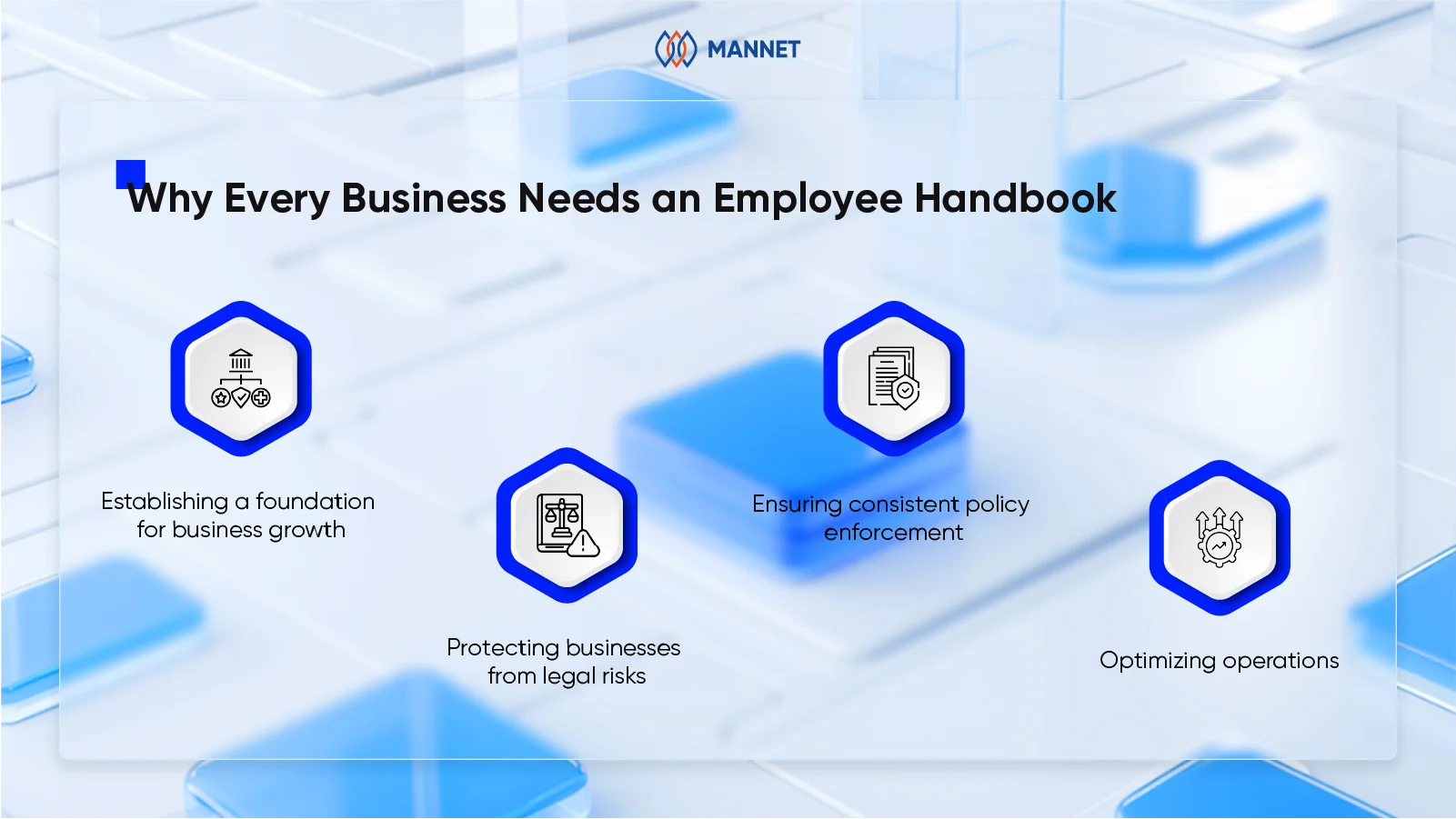
Why businesses need a handbook
Establishing a foundation for business growth
A thoughtfully developed handbook instills the company’s mission, core values, and performance expectations from the outset. It empowers new hires to grasp not only their tasks but also the underlying purpose.
This alignment is particularly vital in dynamic or remote work setups, where consistent communication lays the groundwork for effective collaboration and informed decision-making.
Protecting businesses from legal risks
Employee handbooks serve as a first line of defense against lawsuits by clearly communicating non-discriminatory personnel policies and workplace expectations. They help demonstrate that the company has taken reasonable steps to comply with employment laws such as anti-discrimination and harassment prevention.
This legal clarity reduces the risk of costly disputes and litigation.
Ensuring consistent policies enforcement
When policies are not applied consistently, companies face employee dissatisfaction, claims of unfair treatment, and even legal scrutiny. A centralized handbook makes sure that managers follow the same disciplinary and performance management procedures, reducing the risk of bias or favoritism.
Optimizing operations
By documenting procedures such as timekeeping, requesting time off, reporting absences, and workplace behavior standards, an employee handbook streamlines daily operations. It reduces confusion and saves time for both employees and managers by providing a centralized source of information.
This clarity enhances employee engagement and professionalism, contributing to a positive and efficient workplace culture.
What Should Be Included in an Employee Handbook?
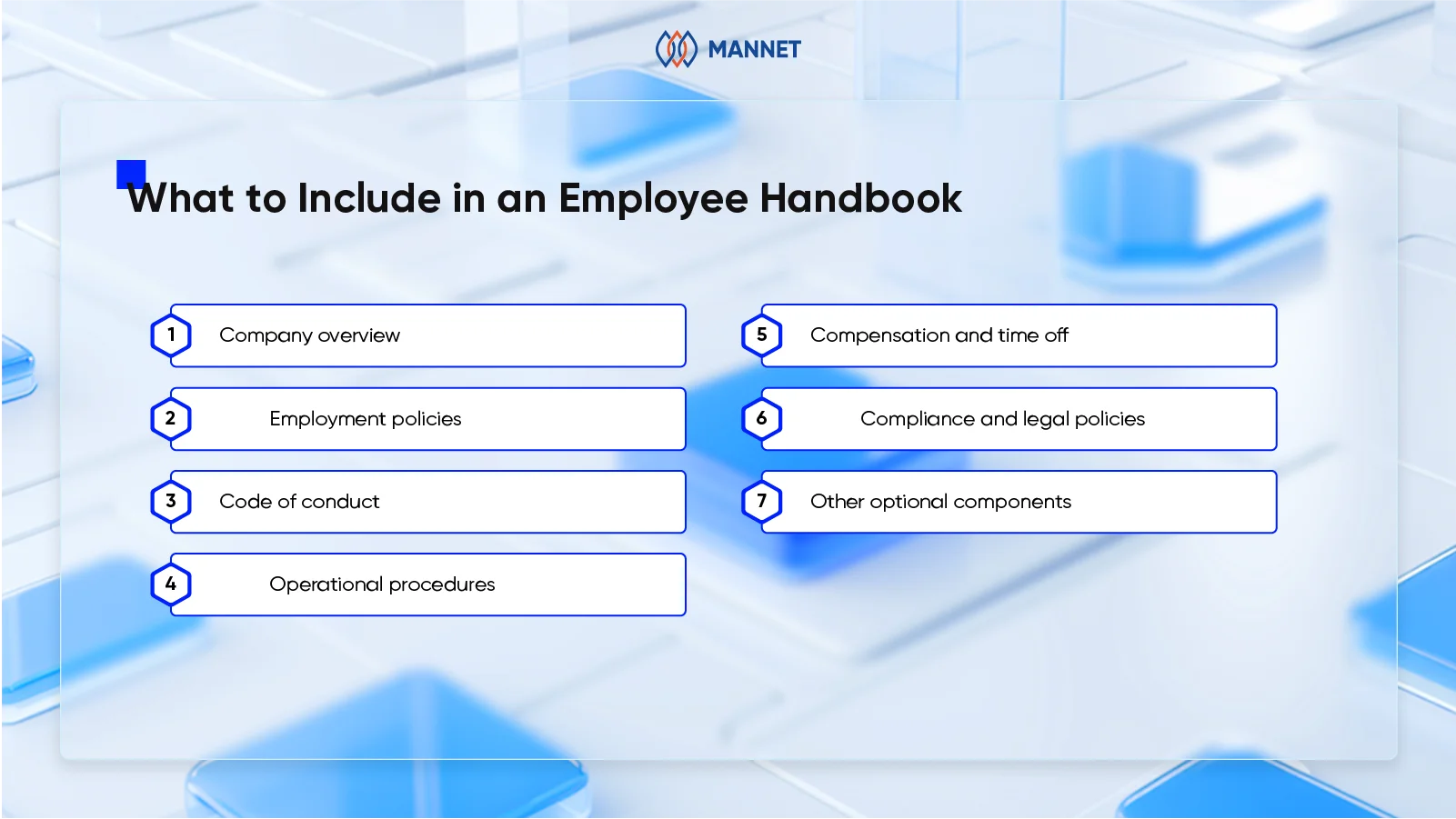
Company overview
Start by setting the stage. Introduce the business with a brief history, mission, vision, and core values. This section helps new employees understand the “why” behind the organization and how their roles connect to broader goals. A clear and compelling company overview reinforces cultural alignment from day one.
Employment policies
Outline key employment-related policies such as:
- Employment classifications (full-time, part-time, contract, temporary)
- Equal opportunity and anti-discrimination policies
- Hiring procedures and background check disclosures
- Work eligibility (I-9 compliance, visa sponsorship if applicable)
This section ensures transparency in how employees are brought into the organization and treated throughout their tenure.
Code of conduct
Define your expectations for professional behavior in the workplace. This includes:
- Dress code (if applicable)
- Ethics and business integrity
- Workplace behavior, anti-harassment, and anti-bullying policies
- Guidelines on social media use and external communication
A well-written code of conduct sets the foundation for accountability and mutual respect.
Operational procedures
Provide clarity on internal processes, such as:
- Reporting structure and communication channels
- Attendance and punctuality expectations
- Procedures for resolving grievances or filing complaints
- Disciplinary actions and performance improvement protocols
Consistency in procedures minimizes confusion and supports fair decision-making across teams.
Compensation and time off
Employees need to know when and how they’ll be paid and what benefits they’re entitled to. Include:
- Payroll schedule and payment methods
- Overtime policies
- Paid time off, sick leave, holidays, parental leave
- Time-tracking requirements (if applicable)
Be sure to localize policies in compliance with labor laws in the local region.
Compliance and legal policies
Protect your business and keep employees informed by documenting relevant legal and regulatory policies. These often include:
- Workplace safety (OSHA, local health regulations)
- Data privacy and confidentiality
- Drug-free workplace policy
- Non-disclosure and non-compete agreements
- Whistleblower protections
These policies help reduce risk and demonstrate the commitment to ethical practices.
Optional components
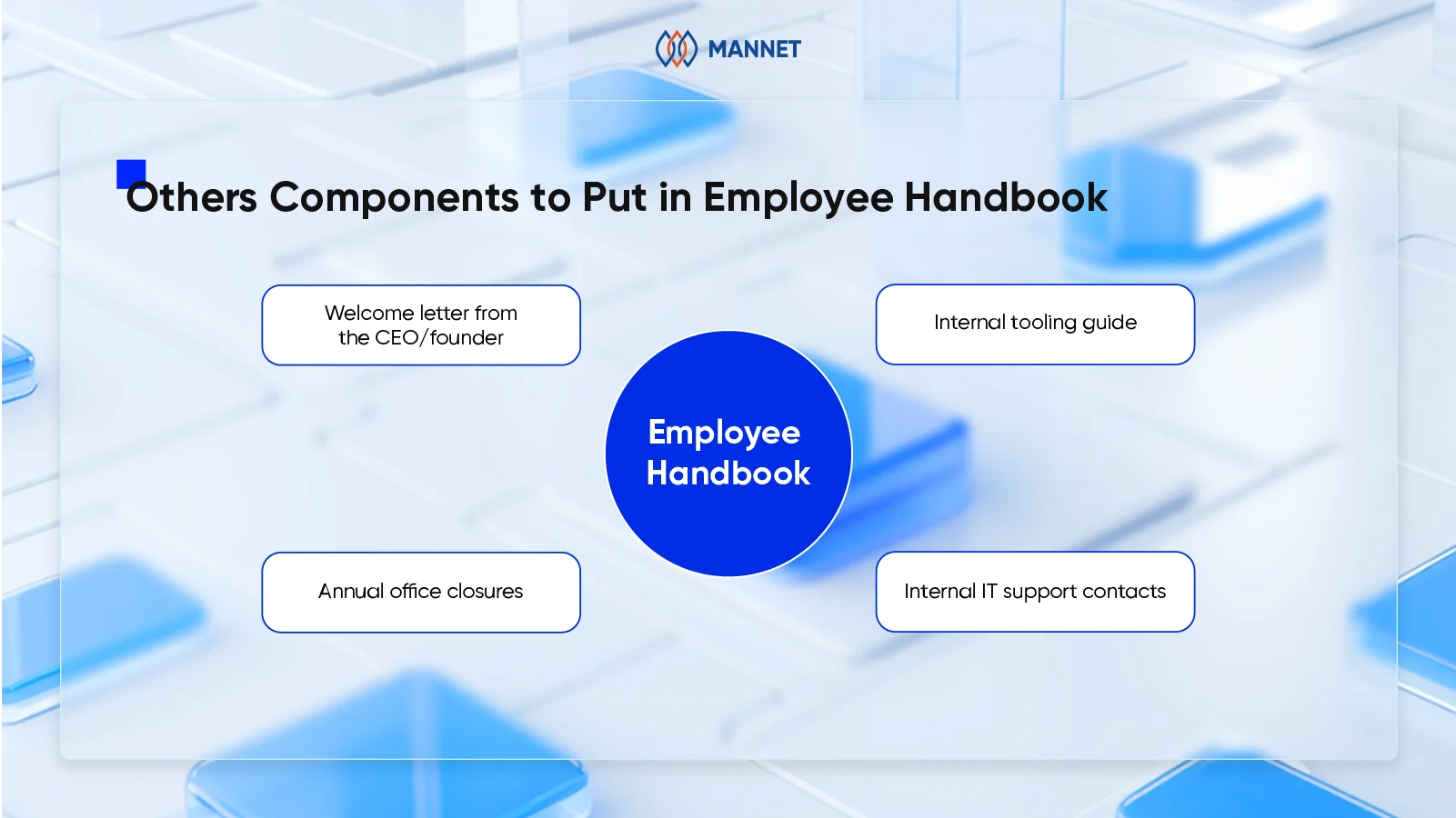
Other components in employee handbook
Depending on team size and industry, businesses may want to enrich the handbook with practical add-ons, such as:
- Welcome letter from the CEO or founder
- Annual office closures
- Internal tooling guide
- Cybersecurity tips
- Onboarding information
- Offboarding procedures
- Internal IT support contacts
- People Ops team overview
- Breaks and meal policies
- Work travel and reimbursement
FAQs on Employee Handbook
- What is the purpose of an employee handbook?
An employee handbook serves as a central reference that outlines the company’s policies, expectations, and culture. It sets the tone for professional conduct, clarifies employment terms, and provides guidance on operational procedures. For businesses, it’s a critical tool to ensure consistency, reduce legal risks, and help new hires acclimate quickly.
- What is the difference between an employee handbook and a policy manual?
While both documents cover company rules and standards, they serve different audiences and purposes:
- Employee handbook: Written in accessible language for all employees, it communicates workplace expectations, benefits, and culture.
- Policy manual: Typically more detailed and technical, it’s designed for internal HR or management use. It contains in-depth procedures, compliance frameworks, and step-by-step operational protocols that may not be relevant to every employee.
- Are employers required to provide an employee handbook?
There’s no universal legal requirement to have an employee handbook, but it’s considered a best practice, especially for growing businesses. Not having one can lead to misunderstandings or legal exposure if company expectations are unclear or undocumented.
Final Thoughts on Employee Handbook
By this stage, any business should have a clearer answer to “what is employee handbook” and why it represents such a valuable asset. Investing in a comprehensive employee handbook is a strategic move that can benefit businesses in numerous ways. A well-crafted employee handbook lays the groundwork for strong operations, minimizes legal risks, promotes policy alignment, and helps teams run more efficiently.
For businesses expanding into Vietnam, ManNet offers full-service HR consultation and setup. From recruiting your first team members to developing localized HR policies and documentation that fully comply with Vietnamese labor laws, we’re here to support every step of your market entry.
Contact ManNet today to build your HR foundation with certainty in Vietnam or any market.



